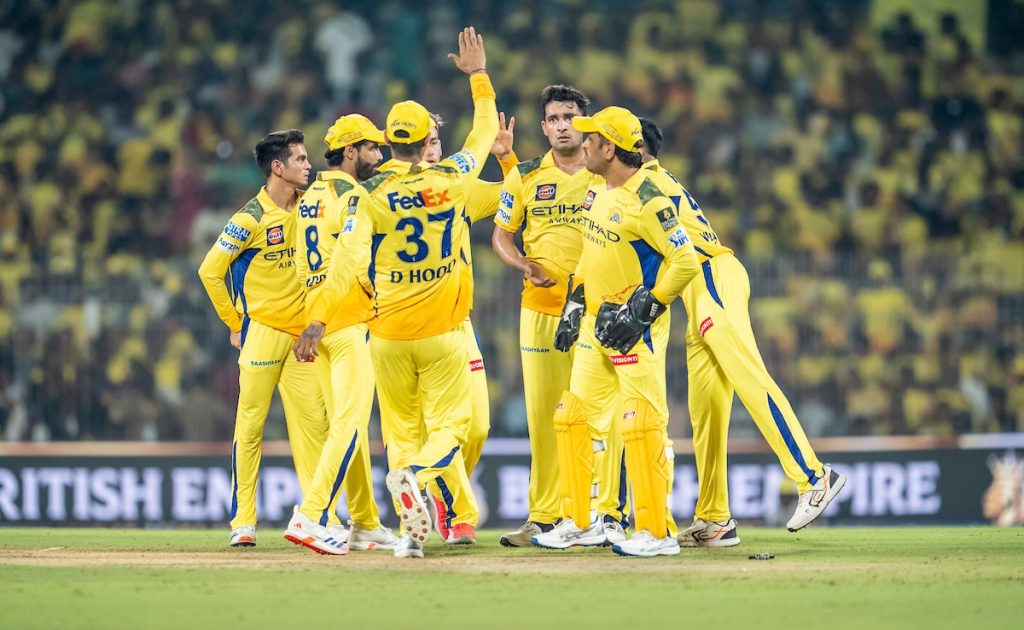Week two and three of IPL 2025 has thrown up a few surprises. Batting has not been as easy and the scoring rate – which soared to new heights in the first 10 matches – has come down significantly. The powerplays have become more normal with almost all the destructive openers from last season failing to replicate the show in this edition. Batting first has emerged as an advantage and spinners have outperformed the pacers in the last fortnight. Also, the two big powerhouses of the IPL – Chennai Super Kings and Mumbai Indians – with 10 titles between them – have had a shocker of a season so far.
We look at the trends and patterns from IPL 2025.
Massive dip in scoring rates
The first 10 matches of the season had a combined run-rate of 9.91 and it was threatening to go even higher. However, the trend reversed and there has been a substantial drop in the scoring thereafter with the run-rate coming down to 9.29 from match 11.
One of the main features of the revolutionary season last year was the batting in the powerplay. Teams like Sunrisers Hyderabad, Kolkata Knight Riders and Delhi Capitals wreaked havoc on the opposition bowlers in the first 6 overs and broke all-time records. Interestingly, while the pattern continued for the first 10 matches this season with a powerplay run-rate of 10.2, the numbers have significantly reduced thereafter. The average powerplay run-rate in the next 15 matches (match number 11 to match number 25) is just 9.01.
While SRH had a run-rate of 11.2 in IPL 2024, KKR blasted their way to the title with a run-rate of 11.1. Both teams have struggled to up the ante against the new ball and have a run-rate of 9.7 and 9.9 this season. Even Delhi Capitals, who are unbeaten in the tournament, have seen their powerplay run-rate dip from 10.7 in 2024 to 8.3 in this edition.
The likes of Abhishek Sharma (PP strike rate of 127.5), Jake Fraser-McGurk (74) Yashasvi Jaiswal (126), Ishan Kishan (130) haven’t quite fired this season. Will Jacks has been a patch of the batter he was last season while Travis Head and Sunil Narine also haven’t been at their destructive best.
Frequency of sixes and 200-plus totals
A total of 204 sixes were hit in the first 10 matches this season. That was approximately 20 sixes per match. The frequency has gone down significantly in the next 15 matches with a combined 248 sixes (16.5 sixes per match).
There were six 200-plus totals in the first 10 matches this season but only three in the next nine games. However, there has been a sudden increase in the last six matches which have witnessed seven 200-plus totals. But to balance that, there have also been a number of below-par batting performances – on as many as 9 occasions has a team completed their innings for less than 170 in the last 15 matches.
Chasing not an advantage
While the team batting second had a marginal advantage in the first 10 matches winning six of these encounters, the trend has reversed in the next 15 games. The team setting a target has won nine and lost 6 matches. The team batting first has been victorious in all the three matches at the Narendra Modi Stadium in Ahmedabad. Two matches in Mullanpur have also both been won by the team setting the target.
What is remarkable though is the fact that despite chasing not being an advantage this season, the captain who has won the toss has still elected to field on as many as 22 occasions (in 25 matches)! That just showcases the ‘chasing-bias’ in the IPL and overall in T20 cricket!
Runs galore in Hyderabad, Chepauk slowest
The Rajiv Gandhi International Stadium at Uppal in Hyderabad has been a batting paradise with a run-rate of 10.8 in the three matches this season. Sunrisers blasted 286 in their opening encounter at the venue – the secondhighest team total ever in IPL history! The venue has the least dot ball percentage (18.2%) and the best balls per boundary ratio (3.9) in the edition.
Chepauk has been sluggish and the most difficult scoring venue in the edition with a combined run-rate of just 7.6. A boundary has been hit only every 6.5 balls at the venue and the dot percentage is also high at 29.2%.
Spinners outperform pacers
The slower bowlers have got better returns than the pacers so far in IPL 2025. The spinners have taken a total of 118 wickets at an average of 29.1, strike rate of 19.8 and economy of 8.8. The fast bowlers, on the other hand, have picked up a wicket every 30 runs and have a strike rate of 18.3. They have been quite expensive with an economy of 9.84. Noor Ahmad, Sai Kishore, Varun Chakravarthy, Kuldeep Yadav, Digvesh Rathi and Vignesh Puthur have been the pick of the slower bowlers – interestingly, four of them are left-armers.
MI, CSK in a free fall
The two giants of the IPL – Mumbai Indians and Chennai Super Kings – have been in a free-fall this season. MI have won just one solitary match in five encounters and are at number 8 on the table. They haven’t got the starts at the top of the order with Rohit Sharma struggling to replicate his international form for Mumbai Indians. He has scored just 38 runs in 4 innings. Will Jacks has also been in poor form and managed just 54 runs in his four outings. MI’s opening-wicket stand is just 17.2 – the second-worst this season. The bowling, without Jasprit Bumrah, for the first four matches, lacked venom with the new ball. MI have a combined bowling average of 51.8 and economy of 10.4 in the first 6 overs in the powerplay.
CSK have had a shocker of a season so far and have lost five of their six encounters. The batting has been abysmal and their combined batting average of 24.1 is the second-worst this season. CSK batters have displayed no intent and been very subdued and lacklustre in their attitude and approach. They have a strike rate of 131.8 which is, by far the lowest this season. To add to their woes, CSK have lost their skipper and the mainstay of their batting – Ruturaj Gaikwad – due to an elbow injury. He has been ruled out of the tournament.
Topics mentioned in this article


